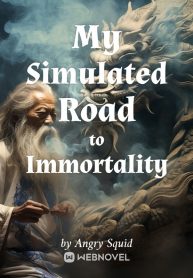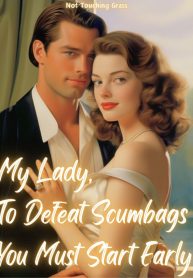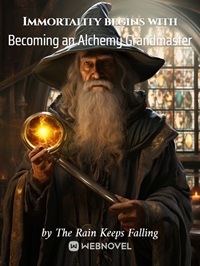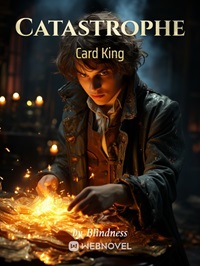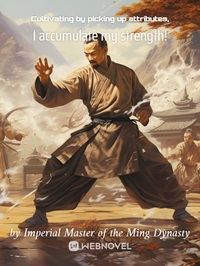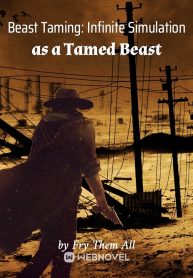Poland was called the “Heart of Europe.” The origin was simple, it was in the middle of the continent, between Germany and Belarus. Moreover, Warsaw, the capital of Poland, is located at the heart of the country.
Sponsored Content
[TN: Here goes geography class.]
The Bisła River, the longest river in Poland ran at 1,047 km in length, which originates in the Beskidy Mountains in the south and flows into the Baltic Sea, and thus divides Warsaw in half.
I was bound to stay on the left bank, though. I had no business on the right.
The cab that picked us up stopped in front of a hotel in the area between the Warsaw Philharmonic, the venue of the International Chopin Piano Competition, and the Chopin Academy of Music. The exterior of the hotel was almost the same as those in Japan—but with the exception of the stylish interior design.
The price per night was about 200 złoty. The room next to Yuzuki’s was fortunately available, so we checked in there. When I dropped my luggage in the room, it was already night outside the window.
Yuzuki came to my room a while later. The tidy hotel room had a soft and pleasant scent. Following her lead, I sank into a leather blue sofa opposite of her. The moment my body sank, exhaustion and drowsiness threatened to put me to sleep. I had traveled a total of twenty-seven hours since Fukushima.
Speaking about time… I set my watch, from three a.m. to seven p.m.
“By the way, how are your parents doing? Aren’t they coming to cheer you?”
Her head dropped. “Maybe. Haven’t met them yet. I can’t concentrate if I see them around.”
It seemed that the feud between Yuzuki and Ranko-san was still going on.
We had dinner together at the hotel restaurant. We had pierogi, a traditional Polish dish that looks like dumplings, borscht, bread called hleb, and a number of other dishes I don’t know the names of.
Every one of them was delicious, but I still couldn’t get the airsickness from the plane away. It was a shame. Yuzuki, who wasn’t on the plane with me, was fine and ate with great appetite. Time passed quickly as we talked about each other’s lives to date. It felt like I could go on forever, but since we need to prepare for tomorrow, we went to sleep early.
Yuzuki’s perfume was still lingered on the bed. It was the scent of freesia.
Sponsored Content
9
October 15. I had breakfast at the hotel restaurant. I looked sideways at Yuzuki, who was eating honey on bread while sipping orange juice. Her makeup seemed a little lighter than yesterday. I wonder why she would bother with makeup; she was already beautiful.
“Yuzuki, your performance is tomorrow, right? Don’t you have to practice?”
“I’ll borrow a piano at the Academy and get down with it in the morning. Let’s have lunch together and then go to the historical center. I’m completely free after the practice.”
Although I was in Poland, I retreated to my hotel room to continue my novel while researching about Warsaw Old Town during breaks.
When Yuzuki returned, we ate at a nearby restaurant and walked northward along Krakow’s suburban street. It was a wide, beautiful cobblestone street. Both sides were lined with Renaissance and neoclassical architecture. The street lamps were shaped like lily pads. I found a statue of Copernicus in front of the Polish Academy of Sciences and another of Poniatowski in front of the Presidential Palace. I wanted to see the famous Chopin statue, but it seemed to be in the opposite direction.
After walking for about 20 minutes, we arrived at our destination. The Historic Centre of Warsaw, a World Heritage Centre, the new Old Town.
This place had once been wiped from the map. Miraculously, it came back to life again.
On September 1, 1939, Germany and its ally, Slovakia, invaded Polish territory. On the 17th, the Soviet Union, which had signed a nonaggression pact with Germany, joined the invasion, and on October 6 of the same year, entirely of Poland was occupied by Germany and the Soviet Union.
Then, on June 22, 1944 – when Operation Bagration, the largest counterattack by Soviet forces against the Germans, was launched in Belarus—the Germans suffered a series of defeats. By this time, the Soviet Union had become Germany’s enemy. After pushing back the Germans from the occupied territories covering the eastern part of Poland, the Soviet Union called on the Polish to take arms against the Germans.
At exactly 17:00 on August 1, the Warsaw Uprising took place, and the Polish military and civilians, including women and children, rose up in arms against the Germans. And thus the Warsaw Uprising. Began.
However, the Soviet troops who had encouraged the uprising abandoned the Polish. Against overwhelming odds, the citizens of Warsaw continued their desperate resistance, but after sixty-three days, they finally lost the war. The number of people massacred was said to have ranged from 180,000 to 250,000. Warsaw was then thoroughly destroyed in a punitive offensive by the Germans.
It was a dark history that reeks of death.
Sponsored Content
After the war, the Soviet Union, which took over Poland from Nazi Germany, planned to transform Warsaw into a Soviet-style city based on socialism. When the citizens of Warsaw learned of this, they united in opposition.
With the slogans “A city destroyed with intent and malice must be restored with intent and passion,” and “The restoration of what has been lost is our responsibility to the future,” the people of Warsaw pitched forward to restore the city.
The citizens of the city worked together on this massive project, and the cost of the reconstruction was covered by individual contributions.
The reconstruction was based on the realistic landscape paintings of Bernard Bellotto, an 18th century court painter, and 35,000 drawings of buildings and other structures left by the students of the Warsaw University of Technology. In 1939, a lecturer, who foresaw the Nazi occupation of Warsaw, collaborated with his students to record the city’s appearance, and risked his life to protect the drawings.
Based on these drawings, the city of Warsaw was recreated “Faithfully, down to the cracks in the walls.”
In 1980, the Old Town of Warsaw became the first World Heritage Centre to be recognized for its “Restoration from destruction and the efforts of its people to preserve it.”
[TN: This novel taught me more history than any history class]
10
Yuzuki and I walked through the beautifully restored medieval city. The buildings were lined with a variety of warm-tone bricks, from Gothic to neoclassical.
The longer we walked, the more impressed I became. What wonderful people the Polish are, I thought. The history of Poland is a tumultuous one. Poland has been invaded many times, has lost countless lives, divided, and yet with great perseverance, Poland has returned to life like a phoenix every time.
Bullet marks were found here and there throughout the city. During reconstruction, to retain the traces of war, the bricks and debris from the original buildings were reused as much as possible.
I stopped and ran my hand over the nearest brick. As soon as I did, I felt like I heard something; The sound of pencils furiously scribbling. The sound of 35,000 drawings being drawn. My heart tightened as I imagined their feelings. How did they feel to know that their home would be destroyed in the near future? What kind of thought did they have when they turned over bricks that were once their city? What vision might they have when they pile over the bricks for reconstruction… I saw flowers piled over to gently cover the echoing gunshots and the horrific death.
So when I saw the chip marks and traces of war, the blank space exudes love, not painful blankness. It made me feel ashamed of myself, like when I saw the Yuzuki soaking in the Abukuma River after the earthquake.
On the cobblestones of Warsaw, the sadness of a dark past hung in the air. But greater than that, the present of the people was beautiful and bright.
Sponsored Content
This was probably why Chopin’s music, which was described as “Cannon among the flowers,” resonated the most in the skies of this city.
I stood there, staring at the bullet holes, and before I knew it, I was crying. Having learned from writing novels, I knew that normal people do not cry in such places, and that people who cry are weirdos. But I couldn’t help but cry.
“Yakumo-kun, you haven’t changed at all,” Yuzuki said as gently snuggled up to me.
12
October 16, 10 am. Warsaw Philharmonic. Yuzuki was the top batter of the day.
I sat in the audience’s seat on the first floor. The world’s best pianists were supposed to be lined up on the second floor as judges (including Martha Argerich!), although I couldn’t see them from my badly angled seat.
The program was announced in English and Polish.
Yuzuki appeared on the stage with a wooden ceiling. She was wearing a gorgeous red dress. The contrast between her glossy black hair and white skin was beautiful.
The audience welcomed her with tremendous applause. That was a natural reaction, only extraordinary pianists pass into this level.
Yuzuki smiled, bowed gracefully, and sat down in front of the piano. The piano was a Yamaha CFX. The contestants could choose in advance which piano they would play from the following four types: Yamaha, Kawai, Steinway, and Fazioli, and here again there was competition among the manufacturers and tuners.
The hall was silent.
Yuzuki took a deep breath.
Tension filled the room.
Sponsored Content
She began to play. Three Mazurkas, Op. 59.
Polonaises and mazurkas were both Polish folk dances, but while polonaises were mainly popular among the aristocracy, mazurkas were popular among the general public. Chopin was said to have played mazurkas on a daily basis.
Op. 59 was composed between 1844 and 1845. At the time, Chopin was still in poor health, and he was also suffering from a scuffle with his lover’s son—George Sand’s son, Maurice.
The beginning was filled with heartrending tunes, while the second sang of vitality, and the ending shifted into indescribable intense emotions but subdued to a sweet, optimistic melody by the end.
It was a piece that fitted his timeline. Op. 59 smelled of death, and it was four years before his death that it was written.
It had been almost ten years since I had heard Yuzuki play live.
As soon as I heard her first note, I felt goosebumps on my back.
Her music had evolved dramatically.
While inheriting the beauty, purity, mellowness, and transparency of sound granules like those of Tanaka Kiyoko, Yuzuki’s own rich emotion and vivid movements added color to the tune. Just as life progresses, the colors of Op. 59 also changed and shifted from moment to moment. She played this complicated piece masterfully, flowing and mellow, like a wine. This must be the cumulation of her years in Italy. Her performance was more complete than ever. She must have had fulfilling days of exercising the piano, and it was reflected in this very performance.
It felt oddly nostalgic, as though the seasons have rewound, and the cherry petals that fell to the ground are now soaring into the sky. And yet, it was as if a precious, blue pearl was forming in my heart, something that was hard to express in words—
“Zal.” This performance was the manifestation of the concept.
When the nearly sixty-minute performance was over, thunderous applause erupted.
Yuzuki smiled. She got up from her chair, bowed, and disappeared offstage.
Her performance was overwhelming.
Sponsored Content
SPONSORED CONTENT


